Tokyo, Japan, is one of the world’s most storied and fascinating cities. Known for being a bustling metropolis of ultramodern technology, Tokyo is nonetheless full of engrossing historical sites worth visiting. From tranquil temples to mesmerizing museums, this city has something for everyone to explore.
Here are 10 of Tokyo’s most historic and interesting buildings:
- Tokyo Station
- Nikolai Cathedral
- The Old Ministry Of Justice Building
- Hattori Building
- Gokoku Ji Temple
- National Diet Building
- Bank Of Japan Head Office Building
- Kyū-Iwasaki-tei Garden and estate
- National Museum of Modern Art Tokyo
- Tsukiji Hongan-ji Temple
Tokyo Station
Tokyo Station is not only a railway station: many consider it to be its own mini-city.
Serving over 500,000 passengers a day, it is among Japan’s busiest stations. This is saying something, considering just how much the country relies on travel by railway.
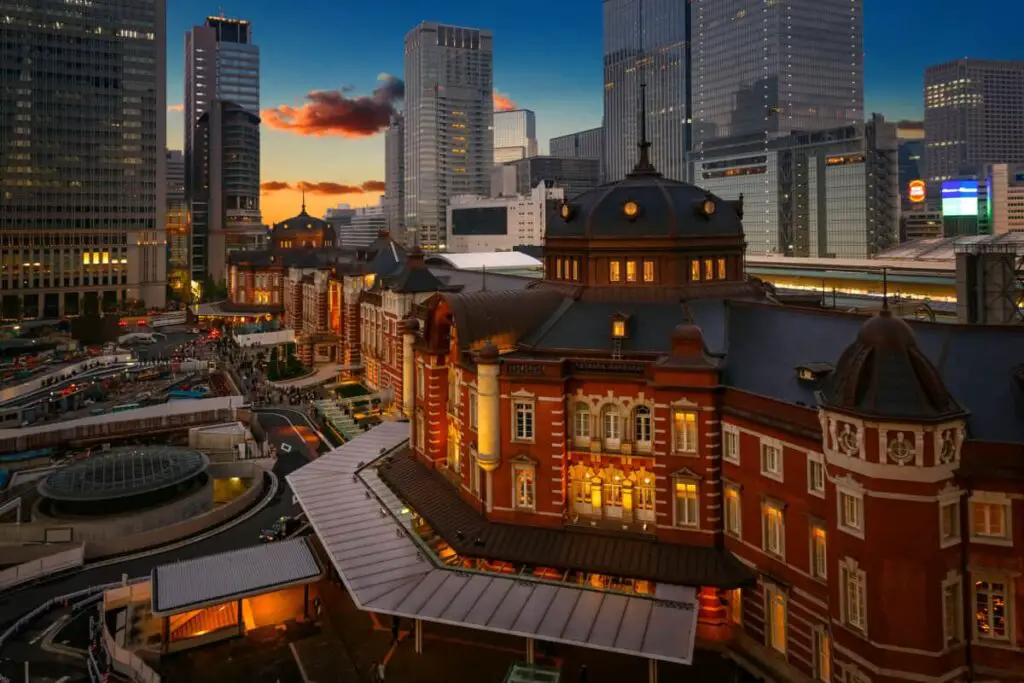
The building is also one of Tokyo’s most unique and stunning. In contrast to the nearby modern glass-covered skyscrapers, Tokyo Station has an anachronistic red-brick facade.
Visitors can find the ekinaka within the station. Ekinaka is a shopping center that is a common feature of Japanese railway stations.
However, Tokyo Station has perhaps the most robust and impressive one. There are numerous souvenir shops, cafes, and convenience stores inside.
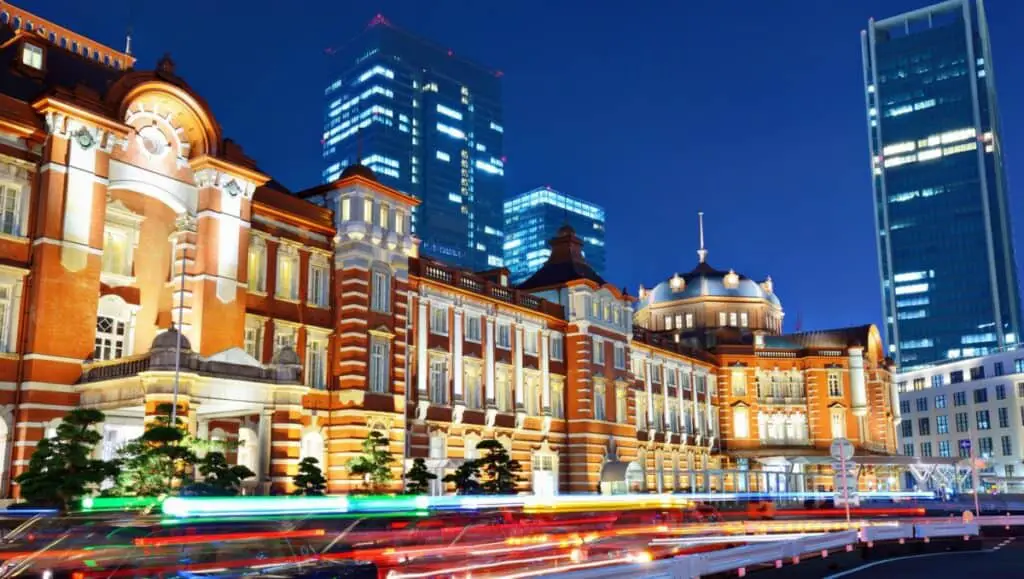
Tokyo Station Official Website
From Tokyo Station, tourists can also reach many of the other parts of Japan. This makes it a great launching point for an authentic journey around the country.
Nikolai Cathedral
Nikolai Cathedral, also known as the Holy Resurrection Cathedral, is located in the Kanda area of Tokyo.
The church was initially built in 1891 but suffered significant damage in the Great Kanto Earthquake of 1923. As a result, the building in its current form dates back to 1929.
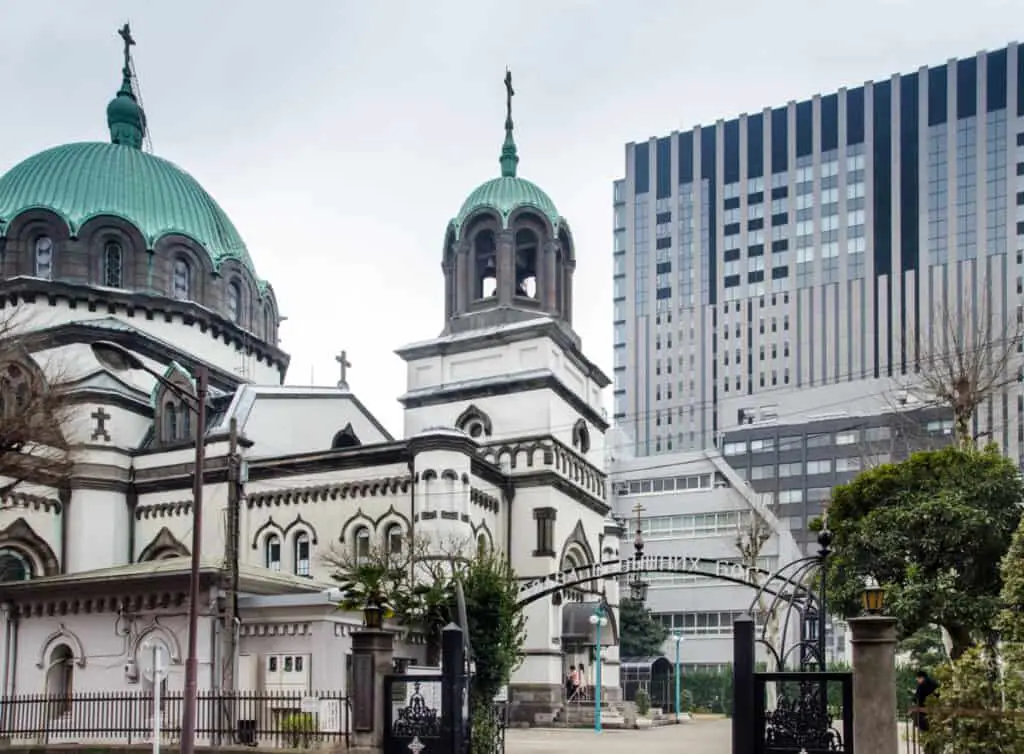
Nikolai Cathedral Via Wikipedia
Known for being the most prominent Orthodox Church in the country, it incorporates Byzantine and Russian architectural influence. The exterior provides a striking juxtaposition to nearby modern buildings and traditional Japanese shrines.
The church’s moniker comes from St. Nicholas of Japan, a Russian Orthodox priest. St. Nicholas was famous for his tireless work improving relations between Russia and Japan while serving as Bishop to Japan.
Holy Resurrection Church is only open to visitors from 1300-1530 most days. Admission costs ¥300 (~$2.60). If you’d like to attend a service, they occur at 10am on Sunday. Vigils are also held starting at 6pm on Saturdays.
The Old Ministry of Justice Building
The Old Ministry of Justice Building, also known as the Red-Brick Building, is in the Kasumigaseki district of Tokyo. Many passersby love to stop and admire the structure, which sports stunning Baroque Revival architecture.
The Red-Brick Building stood firm to the Great Kanto Earthquake of 1923 but was devastated by the Tokyo firebombings in WWII. By 1950, it was rebuilt with some slight modifications for earthquake safety.
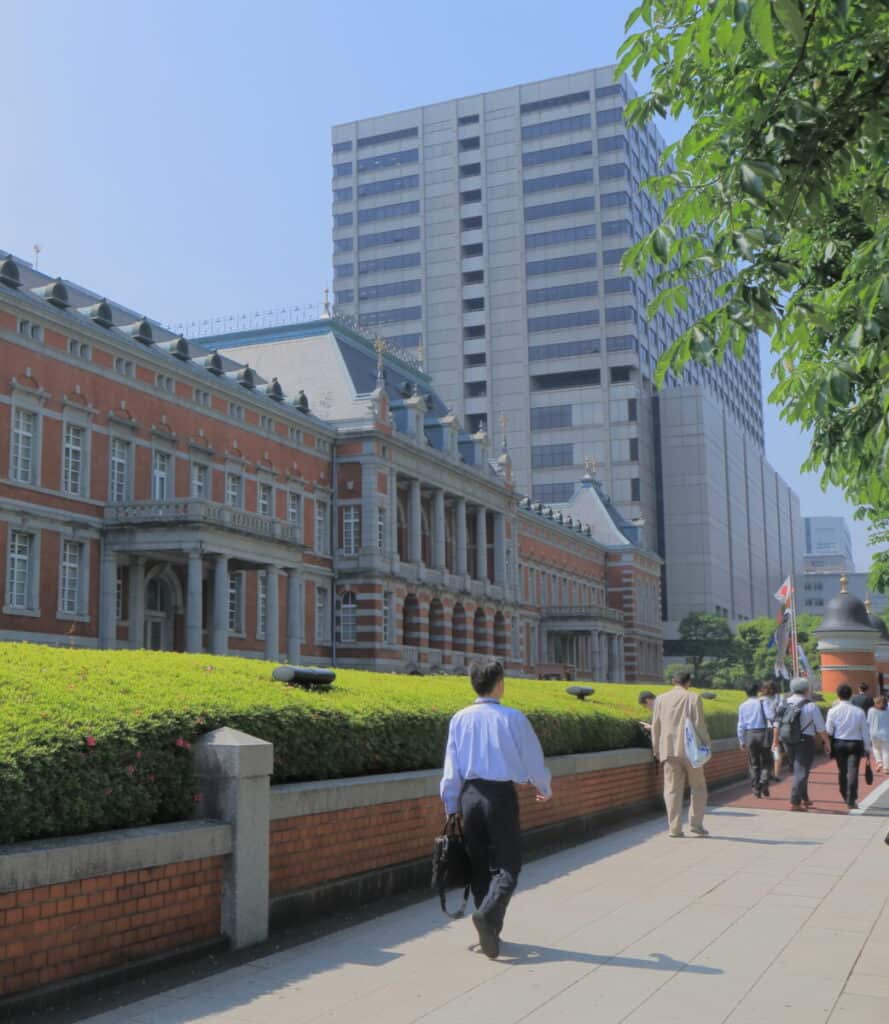
Ministry Of Justice Building Official Website
While no longer the main headquarters for the Ministry of Justice, it still holds government offices. Additionally, Japan designated it as a protected “Important Cultural Property” thanks to its architecture and history.
On the third floor, there is a “message gallery” exhibition room. Here, visitors can read about the history of the Japanese judicial system and those who helped build it. As of this writing, admission is free, but some COVID-19 restrictions are in place.
Hattori Building (Wako Department Store Building Ginza)
The Hattori Building, also known as Wako Department Store, is among Tokyo’s premier shopping destinations. Located in the opulent Ginza district, The Hattori Building features one of Tokyo’s most iconic landmarks: The Wako Clock Tower.
The Wako Clock Tower was erected in 1894 by watchmaker Kintarō Hattori as a symbol of prosperity for his company and Tokyo.
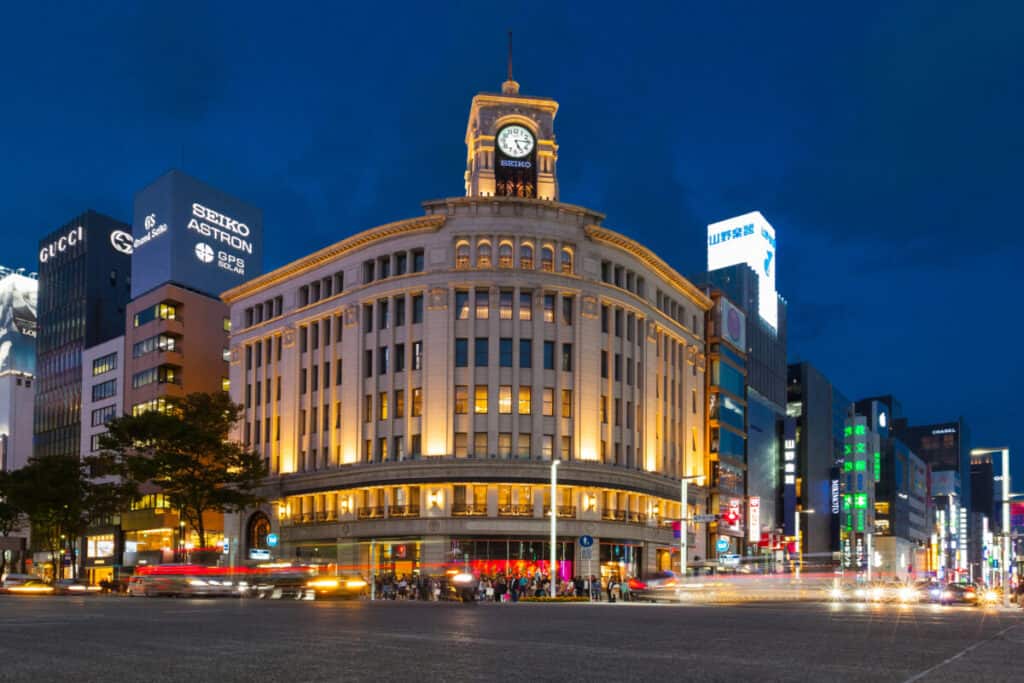
Hattori Building Old Photos Via OldTokyo.com
After numerous renovations, it fittingly stands today at the heart of one of Japan’s busiest economic centers. Despite being surrounded by nearby LED-covered and ultra modern-looking shopping centers, the Hattori Building still appears to have emerged from the 1930s.
Today, visitors can stroll the many floors and buy everything from fine jewelry to artisanal chocolates. You can also find various pieces of Japanese tradition for sale, such as hand-made porcelain and fabrics.
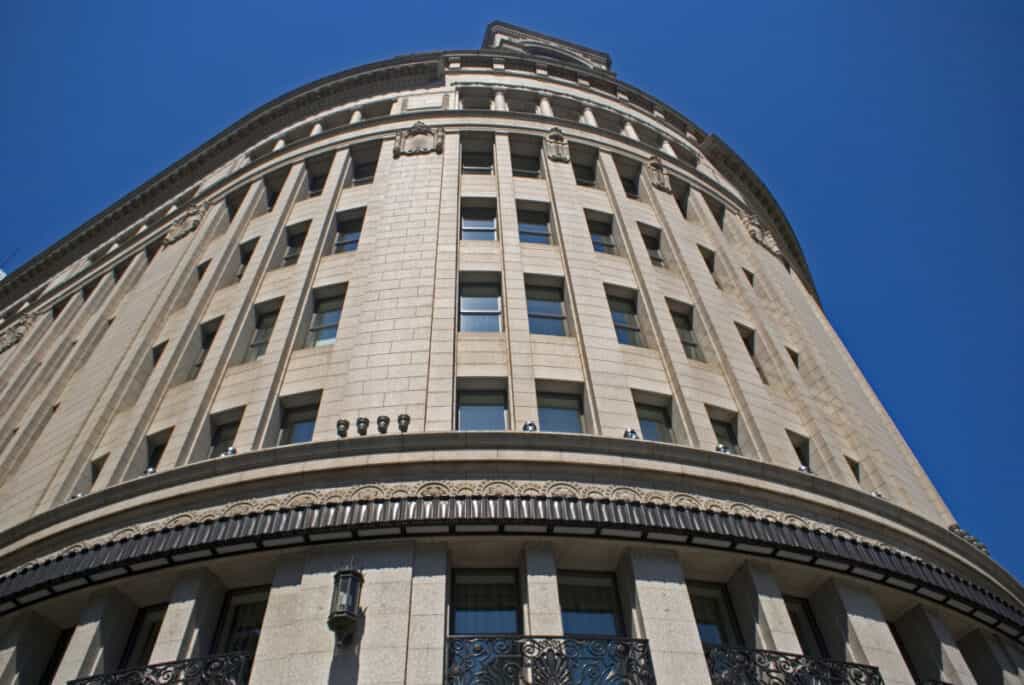
The shopping center is generally open from 1030am to 7pm. Ginza district is an excellent place to stay in Tokyo for visiting the Hattori Building and numerous other shopping centers and attractions.
Gokoku-ji Temple
Gokoku-ji Temple is an outlier among the historic buildings of Tokyo. Despite numerous earthquakes and war in the 1940s ravaged the city around it, Gokoku-ji survived unscathed.
As a result, Gokoku-ji hasn’t changed much since its construction in 1681. It’s one of the few places tourists may see authentic Edo period architecture.
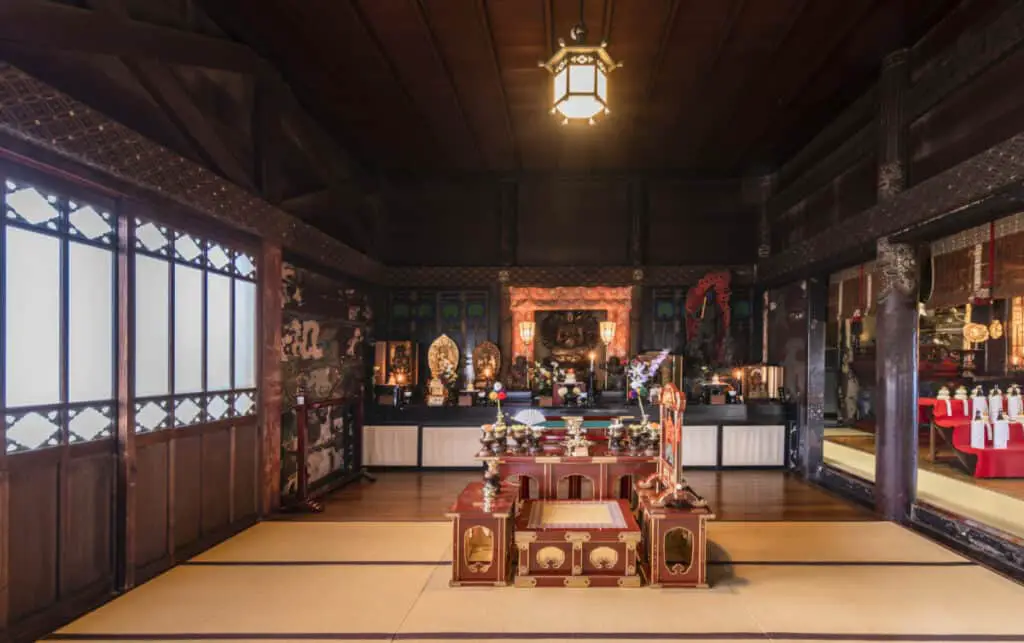
Curious tourists can find the building in Tokyo’s Bunkyō district. This part of Tokyo is surprisingly serene despite its location in the middle of the metropolitan area. There are several beautiful shrines and peaceful water gardens nearby.
Gokoku-ji Temple Official Website
Gokoku-ji’s courtyard is spacious, and the temple grounds include several outer structures. You can easily spend a couple of hours on a stroll through this secluded and relaxed part of the city.
Admission to the temple grounds is free. You can reach it by taking the Tokyo Metro Yurakucho subway line to Gokoku-ji Station.
National Diet Building
The National Diet Building is the political and legislative core of Japan. It’s where the Japanese National Diet, which consists of elected representatives and councilors, congregates.
Originally opened in 1937, the building took 17 long years to construct. But that time was well spent, considering the impressive appearance of the structure.
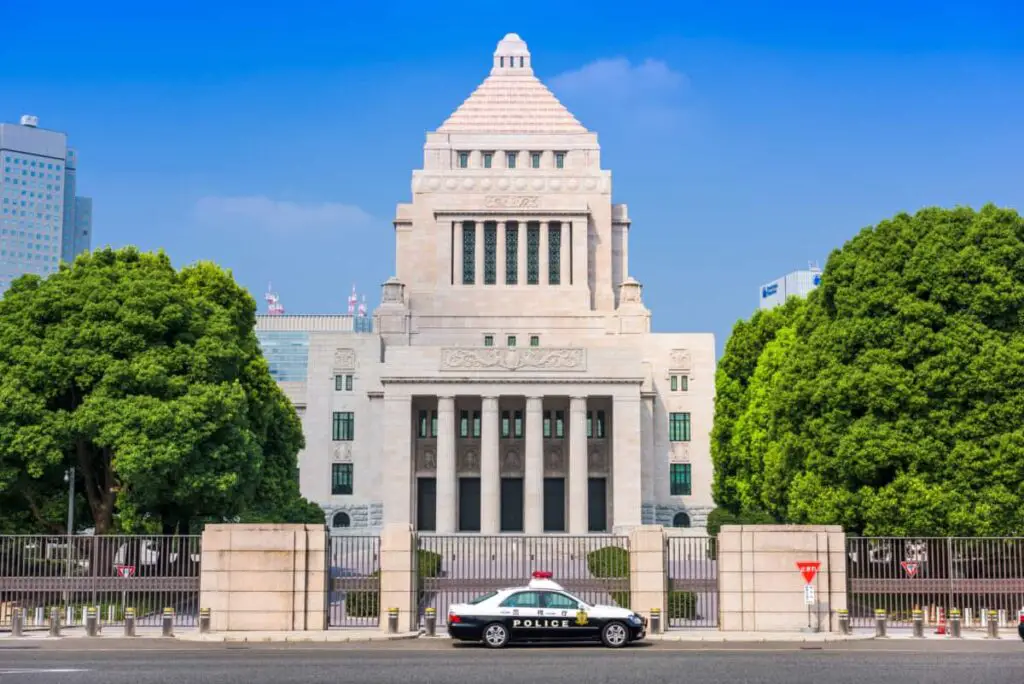
Inside, you will find a main hall adorned with gorgeous stained glass windows and murals depicting the four seasons of Japan. From the outside, passersby can admire the grandiose German-influenced architecture.
Tours of the lower house are available for free, but advanced reservation is required.
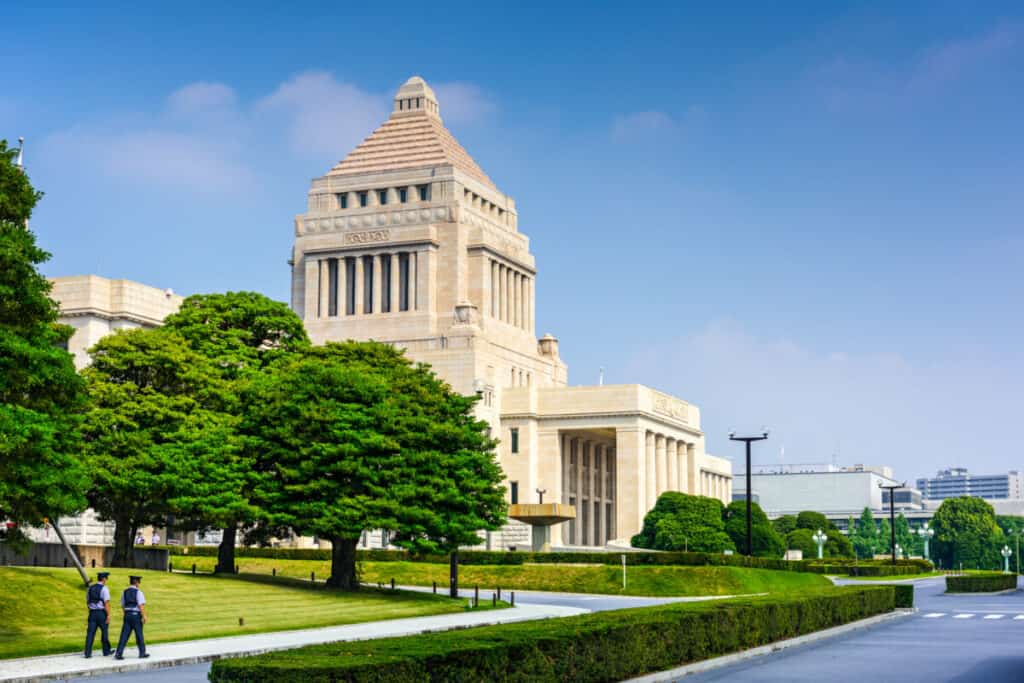
National Diet Building Official Website
Visitors can also tour the upper house for free with a reservation. Unfortunately for tourists, these guided group tours aren’t available in English.
Bank Of Japan Head Office Building
The Bank of Japan Head Office was the first building designed in Japan by a Japanese architect in a modern style.
The architect, Kingo Tatsuno, is said to have spent 14 months visiting European banks for inspiration. Ultimately, he would model the construction after the National Bank of Belgium.
The Bank of Japan Head Office Building boasts elegant architecture. The symmetry evokes Renaissance values, while the patina dome is neo-Baroque.
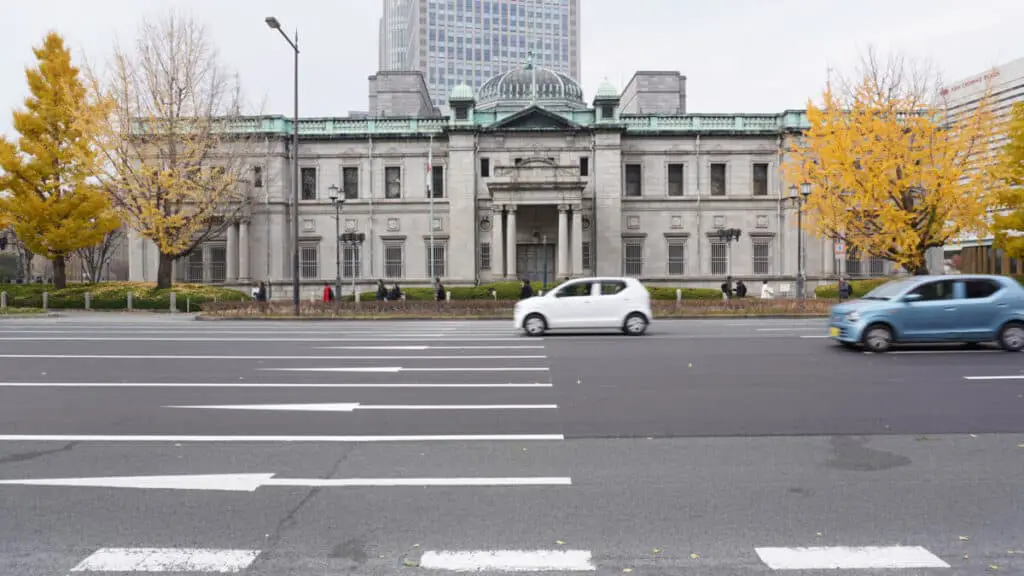
Bank Of Japan Head Office Building Official Website
The structure featured many innovations for Japan when it opened in 1896, such as elevators and flushable toilets. The architect, Kingo Tatsuno, also designed the Red-Brick Building.
The Bank of Japan Head Office is very visitor-friendly. They offer free hour-long tours twice a day, starting at 1100 and 315pm. It takes visitors through an exhibition room, the old banking floor, and the underground vault.
Kyū-Iwasaki-tei Garden
Once the home of Mitsubishi’s third president, Kyū-Iwasaki-tei Garden is now a gorgeous public park. The main residence, Built-in 1896 by architect Josiah Condor, has a uniquely Western style to it.
The grounds also hold two other noteworthy buildings:
- The Billiards House – Made of wooden logs, this building has a gothic appearance to it. It connects to the main mansion via an underground passage.
- The Japanese-Style Building – fusuma (sliding door) paintings and ornamental screens adorn the interior of this building.
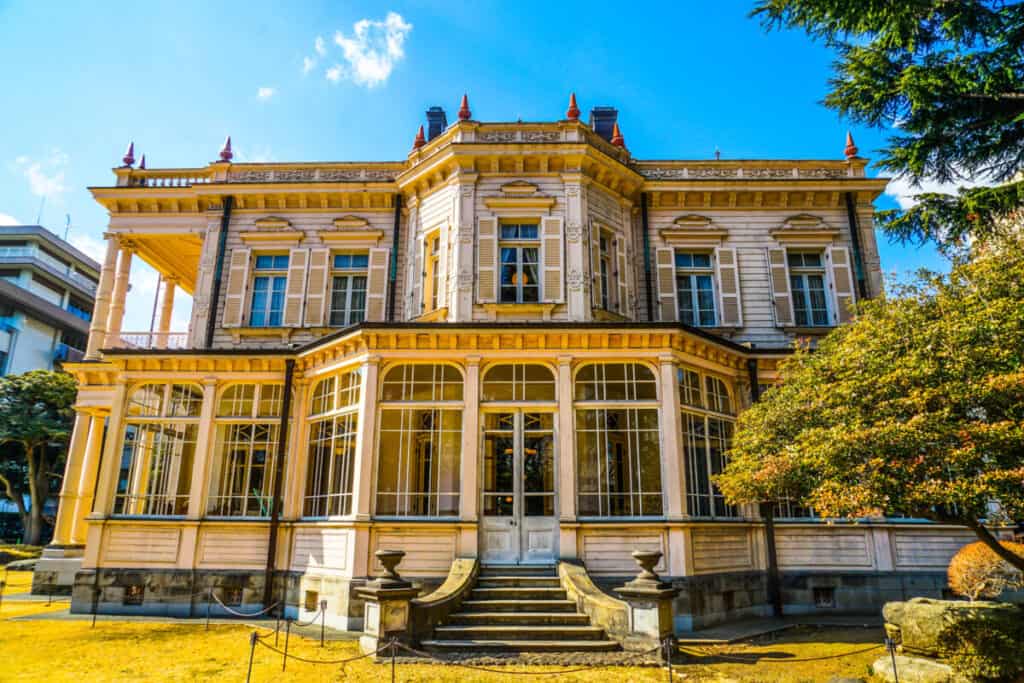
Kyu Iwasaki tei Garden And Mansion Official Website
This quiet and historic garden makes for a welcome retreat from the bustle of the city. You can also enjoy Japanese tea available on the premises while you stroll among the buildings.
Admission is ¥400 (~$3.45) for adults. The garden is only a few minutes’ walk from Yushima Station on the Tokyo Metro Chiyoda Line. It’s also located very near to Ueno Park.
National Museum of Modern Art Tokyo
The National Museum of Modern Art Tokyo, which opened in 1952, is Japan’s oldest national museum of art. The building’s rather unassuming and minimalist facade hides one of the country’s greatest art galleries.
Over 13,000+ pieces of art ranging from sculptures to video installations fill the expansive building’s exhibit halls.
While there are international exhibits, the museum’s strongest point is its collection of Japanese art. It possesses what some consider the best collection of Meiji Period works in the world.
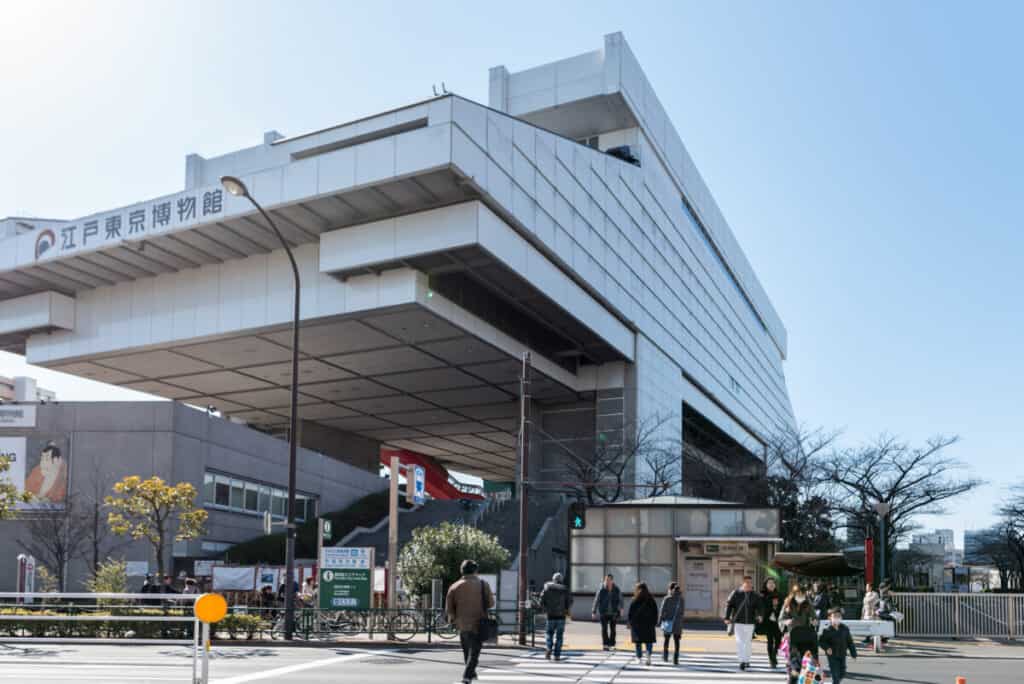
National Museum Of Modern Art Official Website
Throughout the facility are sitting areas for weary legs. Visitors can also visit the museum’s gift shop to grab some modern-art-themed souvenirs.
Admission to the museum is ¥500 (~$4.30) for adults. It’s open from 10 pm to 5 pm most days. On Friday and Saturday, it stays open until 8 pm.
Tsukiji Hongan-ji Temple
Tsukiji Hongan-ji Temple is a Jodo Shinshu Temple found in Tokyo’s Tsukiji district. Thanks to its Indian-inspired architecture, the building is truly unique even compared to the city’s other historic sites.
The original temple was built in 1617 but later destroyed by a city-wide fire in 1657. A reconstruction stood for another few hundred years until the Great Kanto Earthquake destroyed it as well.
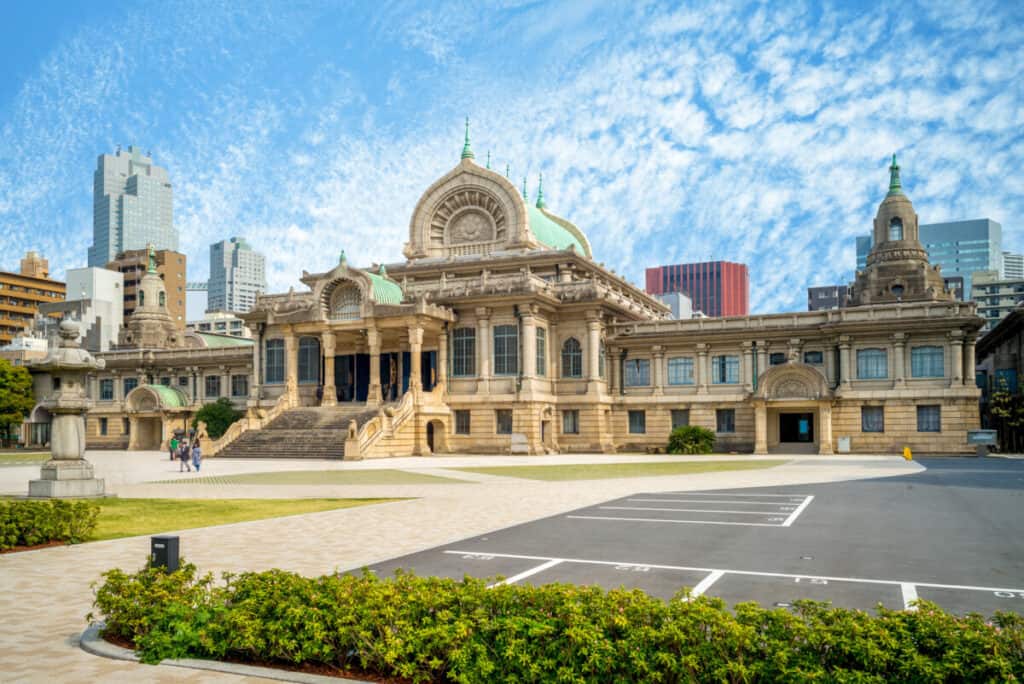
Tsukiji Hongan-ji Temple Official Website
The present-day temple came from the design of acclaimed Japanese architectural historian Itō Chūta. Construction finished in 1934, and the temple is now a major pilgrimage site due to holding several significant historical relics.
Reaching Tsukiji Hongan-ji is pretty straightforward. From the Tokyo Metro Hibiya Line, the temple is only a brief walk from Tsukiji Station.
Entry is free, and the temple is open from 6 am to 5 pm. Lucky visitors may even get a chance to hear the temple’s resounding 2000-pipe organ.










